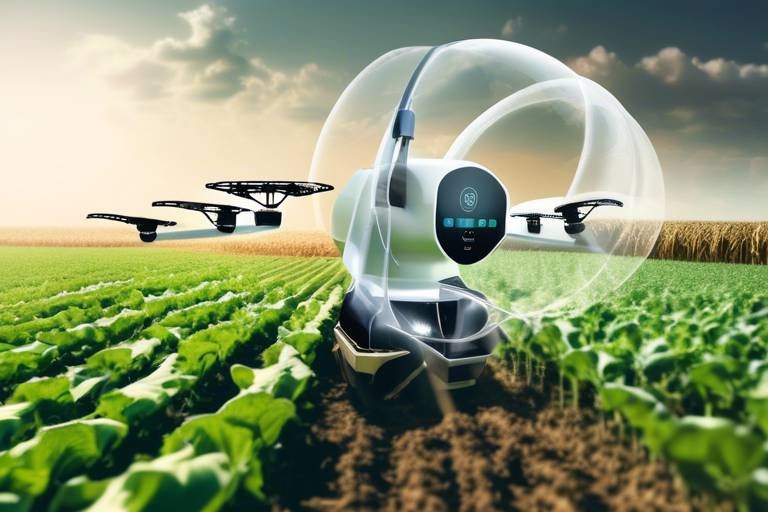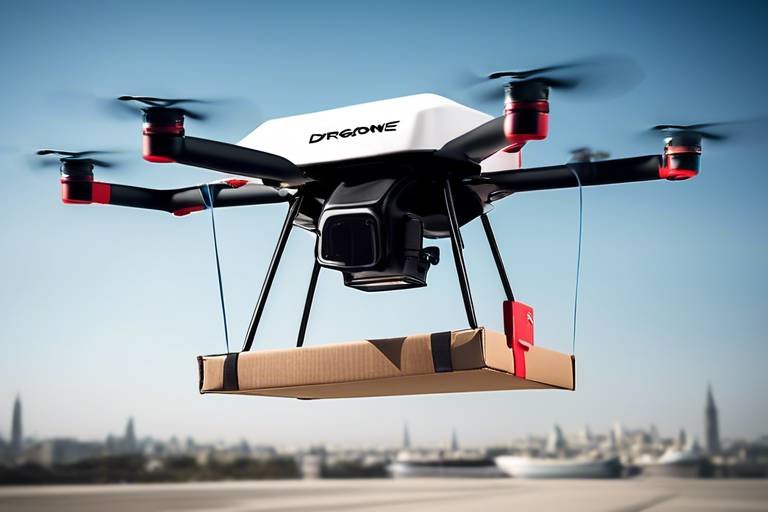The Role of Robotics in Food Production
In today's fast-paced world, the food production industry is undergoing a remarkable transformation, largely driven by the integration of robotics technology. From the fields where crops are grown to the processing plants where food is packaged, robotics is playing an increasingly vital role. Imagine a world where robots can plant seeds, harvest crops, and even package the finished products—all while ensuring that everything is done with precision and efficiency. This is not just a futuristic dream; it is happening right now! As we delve into the impact of robotics on food production, we will uncover how these advancements are reshaping the industry, enhancing productivity, and addressing some of the critical challenges faced by farmers and food manufacturers alike.
The journey of robotics in food production is marked by significant advancements in technology. Recent breakthroughs have led to the development of robots that are not only capable of performing repetitive tasks but can also learn and adapt to different environments. These robots are equipped with advanced sensors, artificial intelligence, and machine learning algorithms that enable them to make real-time decisions. Whether it's determining the optimal time to harvest a crop or identifying defects in food products, robotics is enhancing the efficiency and accuracy of food production processes.
One of the most exciting applications of robotics in agriculture is the rise of automated harvesting systems. These systems utilize sophisticated technology to gather crops with minimal human intervention. Imagine a fleet of robots working tirelessly in a field, each programmed to identify ripe fruits or vegetables and collect them without damaging the plants. This not only speeds up the harvesting process but also reduces waste, as the robots can be programmed to pick only the best produce. The benefits of such systems are immense, leading to increased yields and profitability for farmers.
However, the implementation of harvesting robots is not without its challenges. The initial costs of acquiring these advanced machines can be daunting, and farmers may face a steep learning curve in operating and maintaining them. Moreover, there may be resistance from traditional labor forces who fear job losses due to automation. It’s essential to strike a balance between embracing technology and ensuring that workers are not left behind. As we navigate this transition, open communication and training programs can help ease these concerns.
Beyond harvesting, robotics is also making waves in food processing. Automated systems are now employed for sorting, packaging, and quality assurance, ensuring that hygiene and safety standards are met at every step. For instance, robots can sort fruits and vegetables based on size and quality, drastically reducing the time it takes to prepare products for market. This level of automation not only improves efficiency but also enhances food safety by minimizing human contact, thereby reducing the risk of contamination.
As we consider the impact of robotics on food safety and quality, it’s clear that these technologies are revolutionizing the industry. Automated systems help minimize human error, ensuring that consistent standards are maintained throughout the production process. For example, automated quality control systems utilize advanced imaging and machine learning techniques to detect defects in food products. This means that only the highest quality items make it to consumers, enhancing overall satisfaction and trust in food brands.
Moreover, understanding food safety regulations is crucial when implementing robotic systems in food production. Compliance with these regulations not only protects consumers but also enhances the credibility of the companies involved. By leveraging technology, producers can improve safety measures and traceability, ensuring that every product can be tracked from farm to table. This level of transparency is increasingly demanded by consumers who want to know where their food comes from and how it was produced.
- What are the main benefits of using robotics in food production?
Robotics increases efficiency, reduces labor costs, enhances precision, and improves food safety and quality. - Are there any challenges associated with implementing robotics in agriculture?
Yes, challenges include high initial costs, the need for skilled technicians, and potential resistance from traditional labor forces. - How do automated harvesting systems work?
These systems use advanced sensors and AI to identify ripe crops and collect them with minimal human intervention. - What role does robotics play in food processing?
Robots improve efficiency in sorting, packaging, and quality assurance while ensuring hygiene and safety standards.
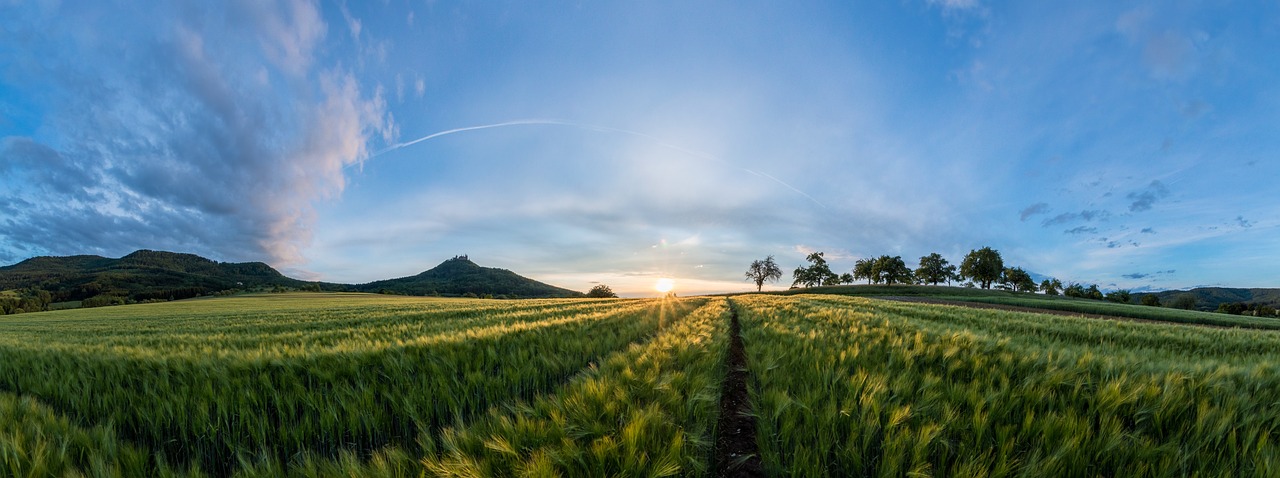
Advancements in Robotics Technology
Recent technological breakthroughs have significantly enhanced robotic capabilities in food production, leading to improved efficiency, precision, and adaptability in various agricultural processes. Imagine a world where robots not only assist farmers but also revolutionize the way food is grown, harvested, and processed. This transformation is not just a dream; it's happening right now. With the integration of Artificial Intelligence (AI), machine learning, and advanced sensors, robots are becoming indispensable tools in modern agriculture.
One of the most exciting advancements is the development of autonomous robots that can navigate fields without human intervention. These robots are equipped with GPS and sophisticated navigation systems that allow them to operate in diverse terrains, making them suitable for various types of farms. They can analyze soil conditions, monitor crop health, and even predict the best times for planting and harvesting. This level of precision ensures that farmers can maximize their yields while minimizing waste.
Another groundbreaking advancement is in the realm of robotic vision systems. These systems use high-resolution cameras and imaging technology to assess crops in real-time. By detecting issues such as pest infestations or nutrient deficiencies, robotic systems can alert farmers to problems before they escalate. This proactive approach not only saves time and resources but also enhances overall crop quality. For instance, a robotic system can scan a field and identify areas that require immediate attention, allowing farmers to focus their efforts where they are needed most.
Moreover, the introduction of collaborative robots or cobots has changed the dynamics of food production. Unlike traditional robots that operate independently, cobots work alongside humans, assisting them in tasks that require both strength and precision. This synergy between human workers and robots can lead to increased productivity and a safer working environment. For example, while a human might struggle with repetitive lifting, a cobot can handle the heavy lifting, allowing the worker to focus on more complex tasks.
To illustrate the advancements in robotics technology, consider the following table showcasing some of the key innovations and their benefits:
| Robotic Technology | Description | Benefits |
|---|---|---|
| Autonomous Robots | Robots that operate independently in fields, using GPS for navigation. | Improved efficiency, reduced labor costs, and enhanced crop management. |
| Robotic Vision Systems | High-resolution cameras to monitor crop health and detect issues. | Proactive problem-solving, leading to higher quality crops. |
| Collaborative Robots (Cobots) | Robots that work alongside humans to assist with physical tasks. | Increased productivity and enhanced worker safety. |
In conclusion, the advancements in robotics technology are not merely incremental; they represent a seismic shift in how food production operates. As we embrace these innovations, we can expect to see not only increased efficiency and productivity but also a more sustainable approach to agriculture. The future of food production is bright, and robotics is at the forefront of this exciting evolution.
- What types of robots are used in food production? Various types of robots are used, including autonomous robots for navigation, robotic vision systems for monitoring crops, and collaborative robots that assist human workers.
- How do robotic systems improve crop quality? Robotic systems utilize advanced imaging and sensors to detect issues early, allowing for timely interventions that enhance overall crop quality.
- Are there challenges in implementing robotics in agriculture? Yes, challenges include high initial costs, the need for skilled technicians, and potential resistance from traditional labor forces.
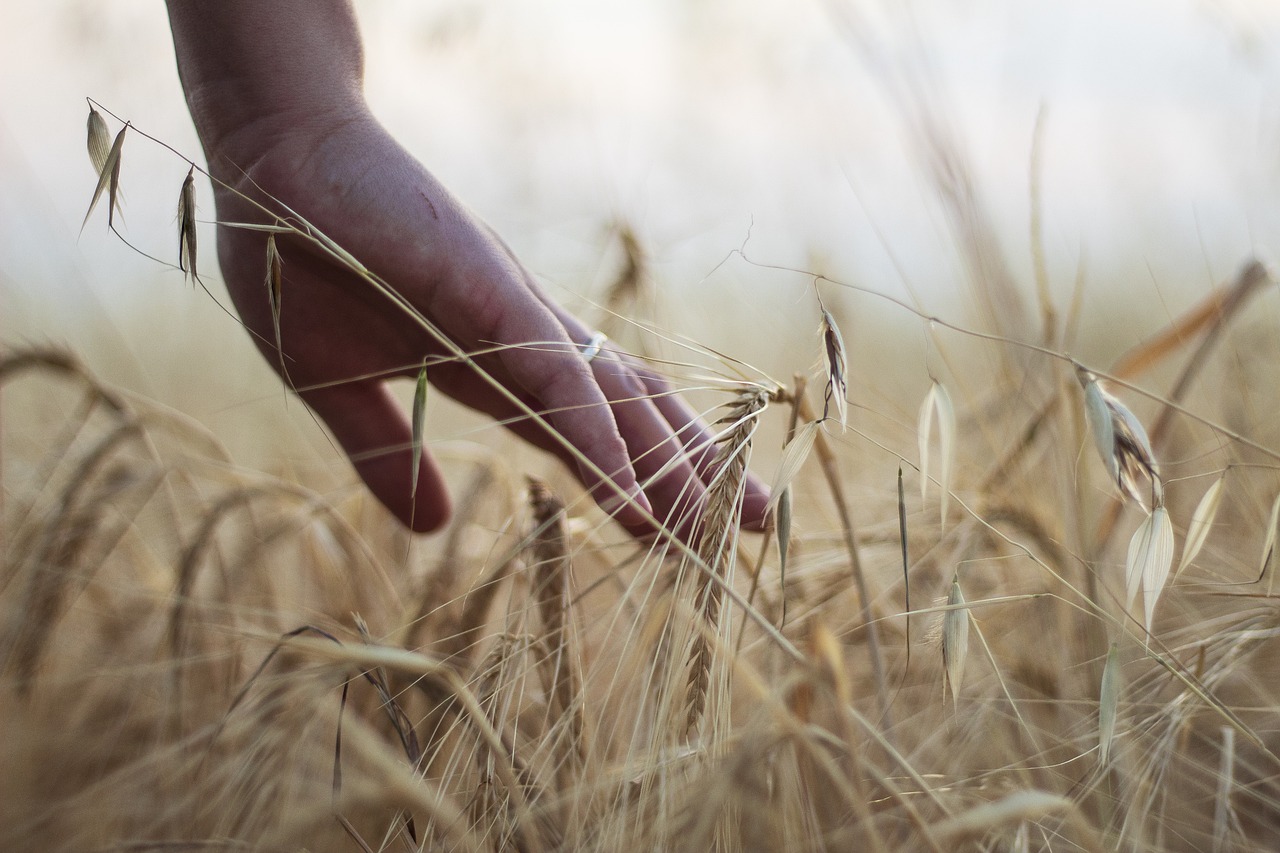
Applications of Robotics in Agriculture
The world of agriculture is undergoing a significant transformation, and at the heart of this change are robotics. These innovative machines are not just tools; they are revolutionizing how we think about farming. Imagine a field where robots diligently plant seeds, monitor crop health, and even harvest produce with precision, all while minimizing human labor. This is not science fiction; it’s the reality of modern agriculture.
Robots are increasingly being utilized in numerous agricultural tasks, from planting and harvesting to packaging and quality control, streamlining operations and reducing labor costs. For instance, automated planting systems can plant seeds at optimal depths and spacing, ensuring that each seed has the best chance to thrive. These machines are equipped with advanced sensors that allow them to analyze soil conditions, making real-time adjustments to their planting strategies. This not only boosts crop yields but also promotes sustainable farming practices by reducing waste.
Moreover, the use of robotic systems for irrigation is becoming more common. These robots can assess moisture levels in the soil and deliver water precisely where and when it’s needed. This targeted approach not only conserves water but also enhances plant health, leading to more robust crops. The integration of robotics in irrigation systems exemplifies how technology can help us use resources more efficiently.
Another fascinating application of robotics in agriculture is in the realm of automated harvesting. Traditionally, harvesting is labor-intensive and time-sensitive, often requiring many hands to gather crops before they spoil. However, with the advent of automated harvesting systems, farmers can now utilize machines equipped with advanced sensors and artificial intelligence to optimize yield and reduce waste during the harvest. These robots can navigate through fields, identify ripe produce, and collect them without damaging the plants or the fruit.
| Application | Description | Benefits |
|---|---|---|
| Automated Planting | Robots that plant seeds with precision | Increased yield, reduced waste |
| Precision Irrigation | Robots that assess soil moisture and irrigate accordingly | Water conservation, improved plant health |
| Automated Harvesting | Robots that collect ripe crops autonomously | Reduced labor costs, minimized waste |
But it doesn’t stop there! Robotics are also making waves in the realm of crop monitoring. Drones equipped with high-resolution cameras and sensors can fly over fields, capturing data on plant health, pest infestations, and nutrient deficiencies. This information is invaluable for farmers, allowing them to make informed decisions that enhance productivity. The ability to monitor vast areas of land quickly and efficiently is a game-changer for the agricultural sector.
In conclusion, the applications of robotics in agriculture are vast and varied. From planting and irrigation to harvesting and monitoring, these machines are not only enhancing efficiency but also paving the way for a more sustainable future in food production. As we continue to innovate and embrace these technologies, the potential for increased productivity and reduced environmental impact becomes more tangible. The future of farming is here, and it's robotic!
- What types of robots are used in agriculture?
There are various types of robots used in agriculture, including automated planting machines, drones for monitoring, and harvesting robots. - How do robots improve efficiency in farming?
Robots can perform tasks faster and more accurately than humans, leading to increased productivity and reduced labor costs. - Are there any drawbacks to using robots in agriculture?
Yes, some challenges include high initial costs, the need for skilled technicians, and potential resistance from traditional labor forces.
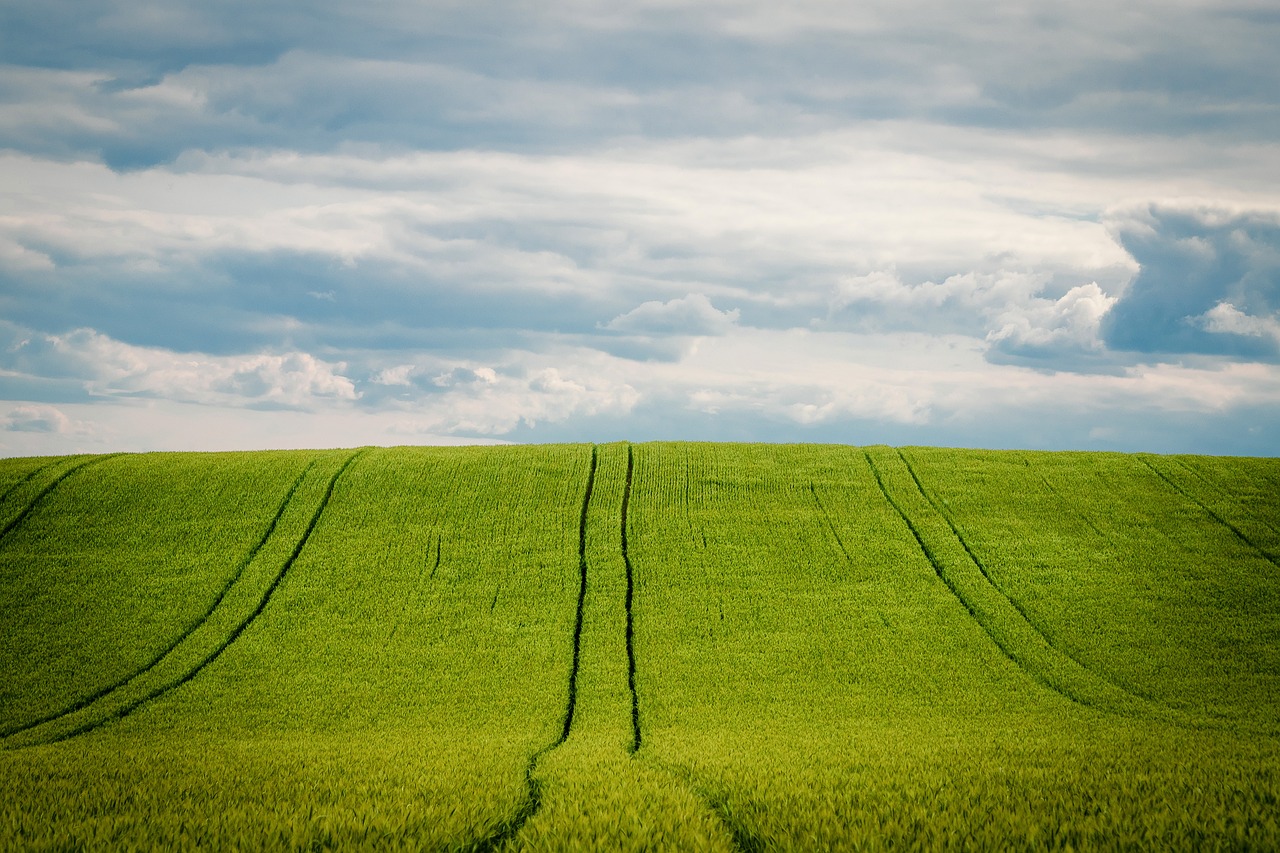
Automated Harvesting Systems
Automated harvesting systems are at the forefront of agricultural innovation, transforming the way we think about collecting crops. Imagine a world where picking fruits and vegetables is not only faster but also smarter. These systems leverage advanced technologies such as artificial intelligence and machine learning, enabling robots to analyze fields, identify ripe produce, and harvest with precision. This technological evolution is akin to giving farmers a well-trained assistant who never tires and works around the clock, ensuring that nothing goes to waste.
One of the standout features of automated harvesting systems is their ability to utilize sensors that detect the optimal time for harvesting. These sensors can gauge factors like ripeness, size, and even sugar content, ensuring that only the best produce is collected. This level of precision not only maximizes yield but also enhances the quality of the crops, making them more appealing to consumers. In a world where food quality can make or break a business, this is a game changer.
However, the implementation of these systems doesn't come without its hurdles. The initial investment can be quite steep, which poses a challenge for small-scale farmers. They might find themselves asking, "Is it worth it?" The answer often lies in the long-term benefits that automated systems provide. For instance, while the upfront costs might be high, the reduction in labor costs and increase in efficiency can lead to significant savings over time. Moreover, as technology continues to advance, these systems are becoming more accessible and affordable.
Additionally, automated harvesting systems are designed to operate in various environmental conditions. Whether it's a sunny day or a rainy afternoon, these robots can adapt to their surroundings, ensuring that harvesting can continue uninterrupted. This adaptability is crucial in today’s unpredictable climate, where weather patterns can significantly impact agricultural productivity.
To illustrate the impact of automated harvesting systems, consider the following table:
| Aspect | Traditional Harvesting | Automated Harvesting |
|---|---|---|
| Labor Costs | High | Lower |
| Harvesting Time | Variable | Consistent |
| Crop Quality | Inconsistent | High |
| Operational Flexibility | Limited | High |
As farmers increasingly adopt automated harvesting systems, they are not just improving their operational efficiency; they are also contributing to a more sustainable future. By reducing waste and ensuring that crops are harvested at the right time, these systems play a vital role in minimizing the environmental impact of agriculture. In essence, automated harvesting is not just about technology; it’s about rethinking how we approach food production in a world that demands more from us.
- What are automated harvesting systems? Automated harvesting systems are robotic solutions designed to collect crops efficiently and accurately, utilizing advanced technologies like AI and sensors.
- How do these systems improve crop quality? They analyze the ripeness and quality of crops, ensuring only the best produce is harvested, which enhances overall quality.
- Are automated harvesting systems cost-effective? While the initial investment can be high, the long-term savings on labor and increased efficiency often outweigh the costs.
- Can these systems operate in different weather conditions? Yes, automated harvesting systems are designed to adapt to various environmental conditions, allowing for uninterrupted harvesting.
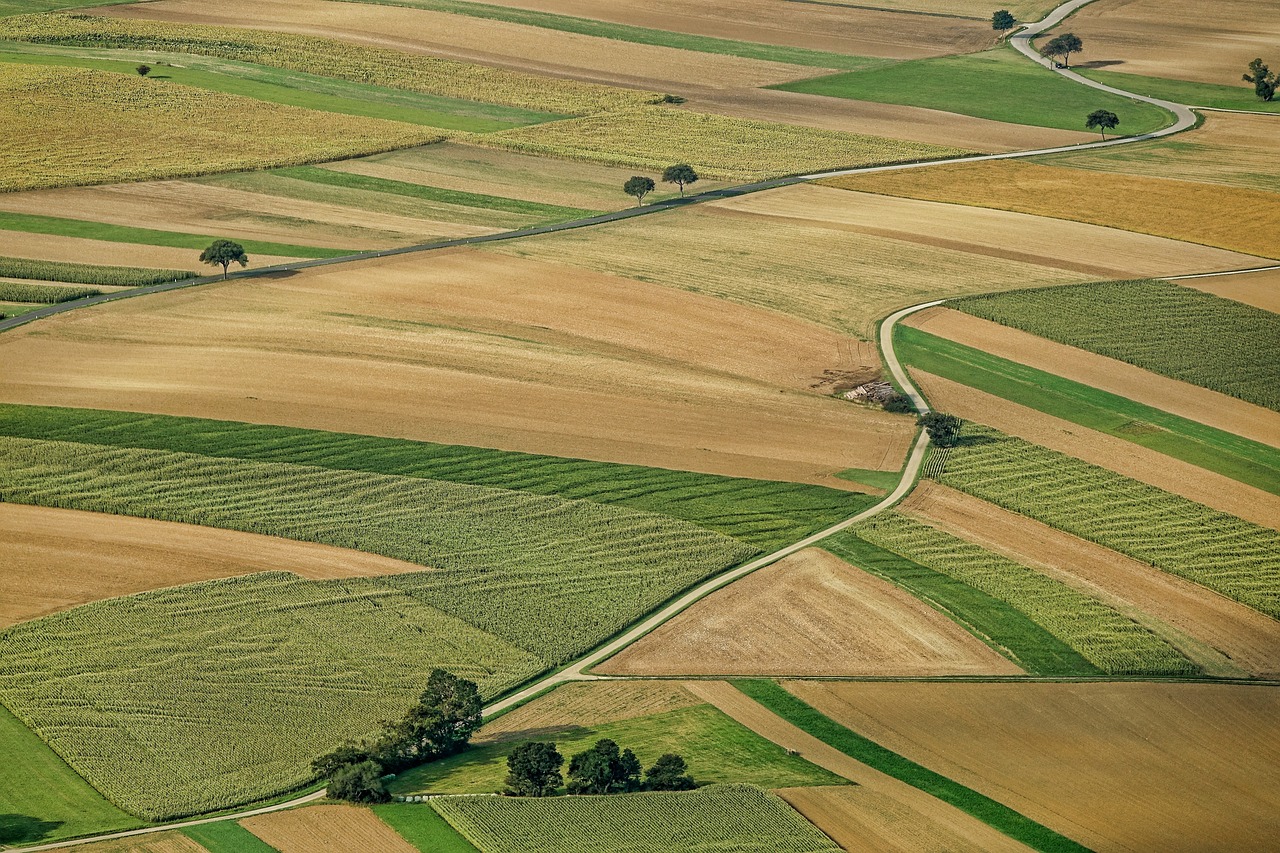
Benefits of Automated Harvesting
Automated harvesting systems are not just a fleeting trend; they are a game-changer in the agricultural landscape. Imagine a world where farmers can gather their crops with the precision of a surgeon and the speed of a cheetah. This is the reality that automated harvesting brings to the table. The benefits are numerous and impactful, reshaping how we think about food production.
One of the most significant advantages is increased efficiency. Traditional harvesting methods often require a large workforce, which can lead to delays and inefficiencies. Automated systems, on the other hand, can operate continuously without the need for breaks, drastically reducing the time it takes to harvest crops. For instance, while a team of human workers might take days to complete a harvest, an automated system can accomplish the same task in a fraction of the time, allowing farmers to maximize their yield and minimize downtime.
Additionally, automated harvesting contributes to reduced labor costs. Labor shortages in agriculture have become a pressing issue, with many farmers struggling to find enough hands during peak seasons. By investing in robotic systems, farmers can alleviate this burden, reducing their reliance on human labor and cutting costs associated with hiring seasonal workers. This shift not only helps farmers save money but also allows them to allocate resources to other critical areas of their operations.
Another noteworthy benefit is the enhanced consistency in crop quality. Automated systems are designed to perform tasks with a level of precision that is difficult for human hands to replicate. For example, these robots can be programmed to identify and pick only the ripest fruits, ensuring that the quality of the harvested produce meets high standards. This consistency not only satisfies consumer demand but also enhances the brand reputation of farmers and producers.
Moreover, automated harvesting reduces waste during the harvest. With advanced sensors and artificial intelligence, these systems can detect the optimal time to harvest crops, minimizing the chances of over-ripening or damage. This leads to a more sustainable approach, as less produce is wasted and more is available for consumption. In a world where food security is a growing concern, this reduction in waste is a significant step towards sustainability.
Lastly, the implementation of automated harvesting systems can lead to higher profitability for farmers. By decreasing labor costs, increasing efficiency, and ensuring high-quality produce, farmers can see a substantial increase in their bottom line. The initial investment in robotic technology may seem daunting, but the long-term financial benefits often outweigh the costs, making it a wise investment for the future.
In summary, the benefits of automated harvesting are multifaceted and transformative. They not only enhance operational efficiency but also contribute to sustainability and profitability in the agricultural sector. As technology continues to evolve, embracing these advancements will be crucial for farmers looking to thrive in a competitive market.
- What types of crops can be harvested using automated systems?
Automated harvesting systems can be used for a variety of crops, including fruits, vegetables, and grains. Each system is typically tailored to specific crop types to maximize efficiency and minimize damage. - Are automated harvesting systems expensive to implement?
While the initial costs can be high, the long-term savings in labor and increased efficiency often make them a worthwhile investment for many farmers. - How do automated systems ensure the quality of harvested crops?
These systems use advanced sensors and AI technology to detect ripeness and quality, allowing them to select only the best produce during harvesting. - Can automated harvesting systems operate in all weather conditions?
Many modern systems are designed to function in various weather conditions, though extreme weather may still pose challenges for their operation.

Challenges of Implementing Harvesting Robots
While the benefits of automated harvesting systems are undeniable, the journey to widespread adoption is not without its hurdles. One of the most significant challenges is the high initial cost associated with purchasing and integrating robotic systems into existing agricultural operations. For many farmers, the upfront investment can be daunting, especially for those who are already operating on tight margins. This financial barrier can deter small and medium-sized farms from embracing this technology, leaving them at a disadvantage compared to larger, more capitalized agricultural enterprises.
Additionally, the implementation of harvesting robots requires a workforce that is skilled in both technology and agriculture. This need for skilled technicians can create a gap in the labor market, as many workers may not possess the necessary training to operate and maintain these advanced systems. The challenge is exacerbated by the rapid pace of technological advancement, which means that ongoing education and training are crucial. Farmers must not only invest in the robots themselves but also in the continuous development of their workforce to keep up with the changing landscape of agricultural technology.
Moreover, there is often resistance from traditional labor forces. Many farm workers fear that robotics will lead to job losses, creating a tense atmosphere where technology is seen as a threat rather than an ally. This resistance can manifest in various ways, from protests to a reluctance to adopt new systems. Overcoming this cultural barrier is essential for the successful integration of robotics in food production. Farmers and technology providers must work together to communicate the benefits of robotics, emphasizing that these tools can enhance productivity and create new job opportunities in areas such as robot maintenance and programming.
In addition to these challenges, there are also technical limitations to consider. Current robotic systems may struggle with certain crops or under specific environmental conditions, leading to inconsistent performance. For example, harvesting delicate fruits requires a level of dexterity and sensitivity that some robots have yet to achieve. Furthermore, the reliance on technology introduces the risk of system failures. A malfunctioning robot can lead to significant losses, both in terms of wasted crops and the cost of repairs. Thus, farmers must weigh the risks against the potential rewards when considering robotic solutions.
In summary, while the implementation of harvesting robots presents exciting opportunities for the agricultural sector, it also brings forth a range of challenges. From financial constraints and the need for skilled labor to resistance from traditional workers and technical limitations, addressing these issues is crucial for the successful adoption of robotics in food production. By fostering collaboration between farmers, technology providers, and the workforce, we can pave the way for a more efficient and sustainable future in agriculture.
- What are the main benefits of using harvesting robots?
Harvesting robots increase efficiency, reduce labor costs, and enhance crop quality by minimizing human error. - Are harvesting robots suitable for all types of crops?
Not all harvesting robots can handle every crop; some are specifically designed for certain types of fruits or vegetables. - How can farmers overcome the high costs of robotic systems?
Farmers can explore financing options, government grants, or partnerships with tech companies to mitigate initial costs. - What skills are necessary to operate harvesting robots?
Operators need technical skills related to robotics, along with a solid understanding of agricultural practices. - Will harvesting robots replace human workers?
While some tasks may be automated, robots are intended to assist rather than completely replace human labor, often creating new job opportunities in tech and maintenance.
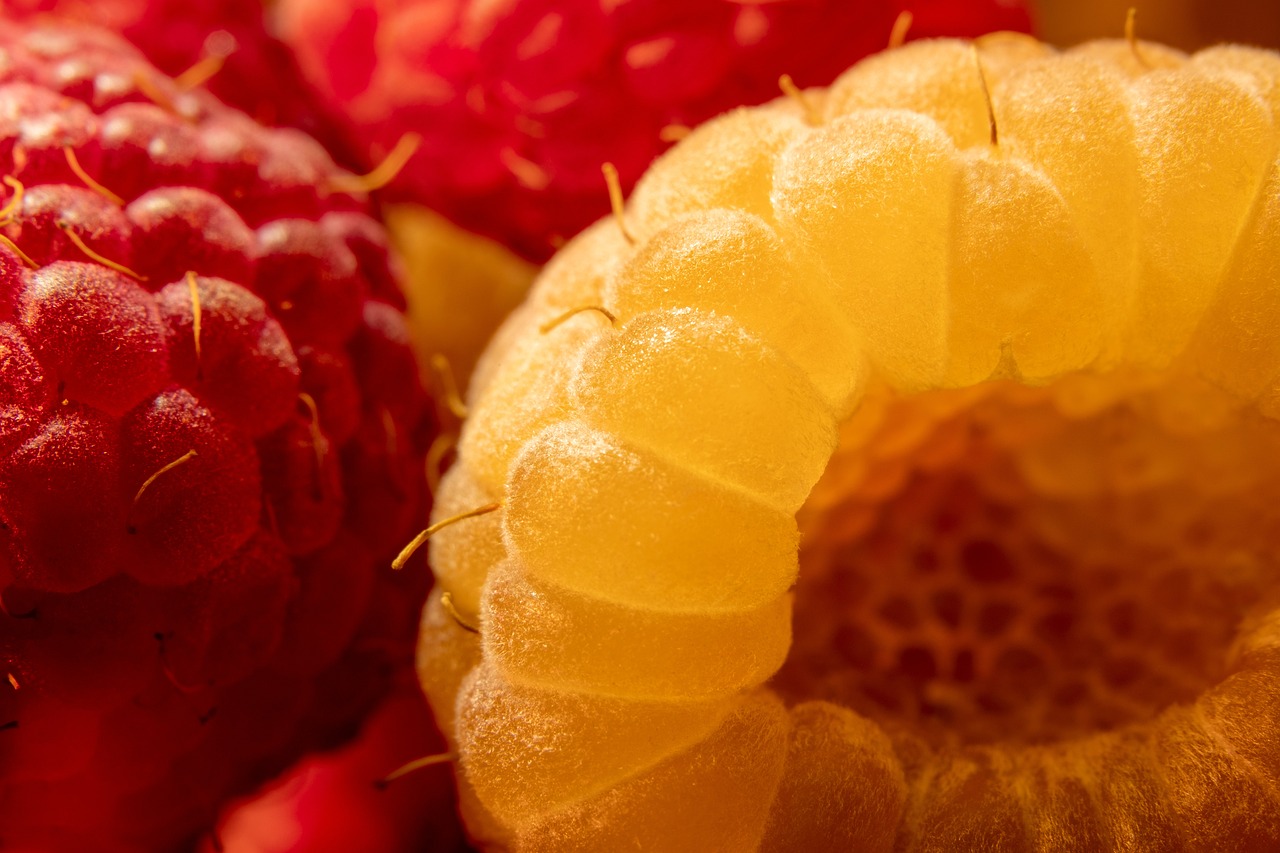
Robotics in Food Processing
Robotics have become a game-changer in the food processing industry, where efficiency and quality are paramount. Imagine a bustling factory floor, where machines seamlessly work in harmony, processing ingredients at lightning speed while ensuring that every product meets the highest standards. This is not a scene from a sci-fi movie; it’s the reality of modern food processing, thanks to robotics.
One of the most significant advantages of robotics in food processing is their ability to perform repetitive tasks with precision and consistency. For instance, sorting fruits and vegetables can be labor-intensive and prone to human error. However, with the introduction of robotic systems equipped with advanced imaging technology, the sorting process has been transformed. These robots can quickly identify defects, size, and ripeness, ensuring that only the best products make it to the packaging stage. This not only enhances the quality of the final product but also reduces food waste, making the entire process more sustainable.
Furthermore, robotics streamline the packaging process, which is crucial in maintaining food safety and extending shelf life. Automated packaging systems can handle a variety of products, from delicate pastries to bulk grains, adapting to different shapes and sizes with ease. By utilizing robotics, companies can achieve higher throughput rates while minimizing the risk of contamination. This is particularly important in an era where consumers are increasingly concerned about food safety.
Another area where robotics shine is in the realm of quality assurance. Automated quality control systems utilize machine learning algorithms to analyze products as they move along the production line. These systems can quickly detect anomalies that might go unnoticed by the human eye, such as color variations or foreign objects. By implementing such technology, food processors can ensure that every package that leaves their facility meets stringent quality standards, thereby protecting their brand reputation and consumer trust.
However, the integration of robotics into food processing isn't without its challenges. The initial investment in robotic systems can be substantial, and companies must also consider the ongoing costs of maintenance and training for their staff. Moreover, as robots take on more tasks, there may be concerns about job displacement among workers. Balancing the benefits of automation with the need for a skilled workforce is a delicate act that requires careful planning and communication.
In conclusion, the role of robotics in food processing is pivotal in enhancing operational efficiency, ensuring quality, and maintaining safety standards. As technology continues to evolve, we can expect even more innovative solutions that will further revolutionize the industry. The future of food processing is bright, and robotics are at the forefront of this transformation.
- What are the primary benefits of using robotics in food processing?
Robotics enhance efficiency, improve product quality, reduce labor costs, and minimize human error, leading to a more streamlined production process. - How do robots ensure food safety?
Robots can maintain consistent hygiene standards, automate quality control, and reduce the risk of contamination during processing and packaging. - Are there challenges associated with implementing robotics in food processing?
Yes, challenges include high initial costs, the need for skilled technicians, and potential resistance from the workforce.

Impact on Food Safety and Quality
The integration of robotics in food production is not just about enhancing efficiency; it is fundamentally transforming how we ensure food safety and quality. In an industry where even a slight oversight can lead to significant health risks, robotics offers a robust solution to minimize human error, which is often a primary factor in food safety breaches. By employing automated systems, producers can maintain stringent hygiene standards and reduce the potential for contamination, ensuring that consumers receive products that are not only safe but also of the highest quality.
One of the most notable advantages of robotics in this context is the ability to implement real-time monitoring. Automated systems can continuously assess conditions throughout the production process, from the moment ingredients are sourced to when the final product is packaged. For instance, sensors can monitor temperature and humidity levels, which are critical for preserving food safety. This data can be analyzed instantly, allowing for immediate corrective actions if any parameters deviate from the set standards.
Furthermore, the use of robotics in quality control is revolutionizing how food products are evaluated. Traditional methods often rely on manual inspections, which can be subjective and inconsistent. In contrast, automated quality control systems leverage advanced imaging technology and machine learning algorithms to detect defects with precision. These systems can identify issues such as improper packaging, foreign objects, or even aesthetic flaws that might escape the human eye. This not only ensures that only the best products reach consumers but also enhances the overall brand reputation of food producers.
To illustrate the impact of robotics on food safety and quality, consider the following table that highlights key benefits:
| Aspect | Traditional Method | Robotics Integration |
|---|---|---|
| Human Error | High risk of contamination and oversight | Minimized through automation and real-time monitoring |
| Quality Control | Subjective and inconsistent | Objective, precise, and consistent |
| Response Time | Slow, often reactive | Immediate, proactive adjustments |
| Compliance with Regulations | Manual tracking and reporting | Automated logging and traceability |
Moreover, understanding food safety regulations is crucial when implementing robotic systems. Compliance with these regulations not only protects consumers but also helps businesses avoid costly penalties. Automated systems can be programmed to adhere to industry standards, ensuring that all safety measures are consistently met. This integration of technology not only streamlines compliance but also enhances traceability, allowing producers to track products through every stage of production.
In conclusion, the impact of robotics on food safety and quality is profound and multifaceted. By reducing human error, enhancing quality control, and ensuring compliance with safety regulations, robotics is paving the way for a safer, more efficient food production landscape. As the industry continues to evolve, the role of robotics will undoubtedly grow, leading to even greater improvements in the quality and safety of the food we consume.
- How do robotics improve food safety?
Robotics reduce human error and enhance monitoring, ensuring consistent hygiene and safety standards. - What are the benefits of automated quality control?
Automated systems provide objective assessments, detect defects accurately, and maintain high-quality standards. - Are there challenges in implementing robotics in food production?
Yes, challenges include high costs, the need for skilled technicians, and potential resistance from traditional labor forces.

Quality Control Automation
In the fast-paced world of food production, emerges as a game-changer, ensuring that only the best products reach consumers. Imagine a scenario where every single piece of produce is meticulously inspected for flaws without the slightest hint of human error. This is precisely what automated quality control systems bring to the table. By leveraging cutting-edge technologies such as advanced imaging and machine learning, these systems can detect defects with remarkable accuracy and speed.
One of the most impressive aspects of quality control automation is its ability to analyze products in real-time. For instance, as fruits and vegetables move along a conveyor belt, high-resolution cameras scan each item, identifying imperfections that might go unnoticed by the human eye. This process not only enhances the consistency of the products but also reduces waste significantly. By identifying subpar items early in the production line, companies can take corrective actions before the products reach the market, thereby maintaining high standards.
Moreover, the integration of machine learning algorithms allows these systems to improve over time. As they process more data, they become better at identifying what constitutes a defect, adapting to new challenges and trends in quality expectations. This adaptability is crucial in a market where consumer preferences can shift rapidly. For example, if a new defect type emerges due to changes in agricultural practices or environmental factors, the automated system can learn to detect it, ensuring that quality standards remain uncompromised.
Additionally, the benefits of quality control automation extend beyond just product quality. They also contribute to a more efficient production process. By automating the inspection phase, companies can redirect human resources to more complex tasks that require critical thinking and creativity. This not only boosts overall productivity but also enhances employee satisfaction, as workers can focus on more engaging roles rather than repetitive inspection duties.
However, implementing such advanced systems isn't without challenges. Companies must invest in the right technology and training to ensure their employees can work effectively alongside these automated systems. The initial costs can be daunting, but the long-term benefits—such as reduced waste, improved quality, and enhanced consumer trust—often outweigh these initial hurdles. In fact, as the technology becomes more mainstream, we can expect prices to decrease, making quality control automation accessible to even smaller producers.
In summary, quality control automation represents a significant leap forward in the food production industry. By minimizing human error and maintaining consistent standards, it not only enhances the quality of food products but also streamlines production processes. As we continue to embrace technological advancements, the future of food quality assurance looks remarkably promising.
- What is quality control automation? Quality control automation involves the use of technology, such as imaging and machine learning, to inspect and ensure the quality of food products during production.
- How does automated quality control improve efficiency? Automated systems can analyze products in real-time, reducing the time spent on inspections and allowing human workers to focus on more complex tasks.
- Are there challenges in implementing quality control automation? Yes, challenges include high initial costs and the need for employee training to work alongside advanced technologies.
- What are the long-term benefits of quality control automation? The long-term benefits include reduced waste, improved product quality, and enhanced consumer trust, which can lead to increased profitability.
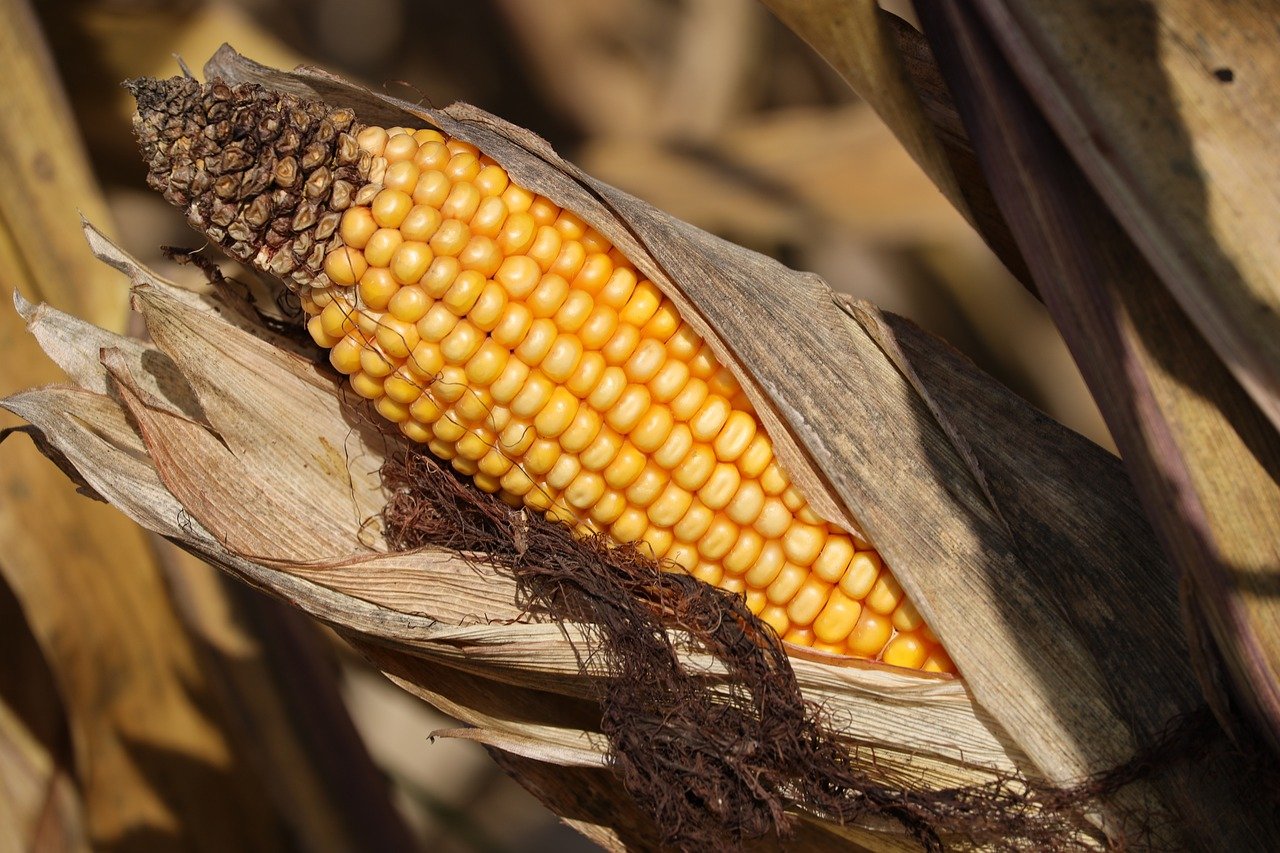
Food Safety Regulations and Robotics
In the ever-evolving landscape of food production, food safety regulations play a pivotal role in ensuring that the food we consume is safe and of high quality. As robotics technology becomes more integrated into the food production process, understanding these regulations is essential for manufacturers looking to adopt automated solutions. The intersection of robotics and food safety is not just about compliance; it’s about leveraging technology to enhance safety measures and ensure traceability throughout the production line.
One of the key aspects of food safety regulations is the requirement for traceability. This refers to the ability to track the production, processing, and distribution of food products. Automated systems, powered by robotics, can significantly improve traceability by maintaining accurate records and providing real-time data on product movements. For instance, utilizing RFID tags and sensors, robots can monitor the entire lifecycle of a product, from farm to table, ensuring that any potential food safety issues can be quickly addressed.
Moreover, the implementation of robotics in food production can help meet stringent hygiene standards set by regulatory bodies. Robotic systems can be designed to operate in sterile environments, minimizing human contact and reducing the risk of contamination. For example, in meat processing plants, robots can perform tasks such as cutting and packaging while adhering to strict hygiene protocols, effectively lowering the chances of foodborne illnesses.
However, navigating the complex landscape of food safety regulations can be daunting for companies looking to adopt robotic technologies. It’s crucial for manufacturers to stay informed about local and international regulations, which can vary significantly. To assist in this process, here’s a brief overview of some essential regulations that impact the use of robotics in food production:
| Regulation | Description |
|---|---|
| FSMA (Food Safety Modernization Act) | A U.S. law aimed at ensuring the U.S. food supply is safe by shifting the focus from responding to contamination to preventing it. |
| HACCP (Hazard Analysis Critical Control Point) | A systematic preventive approach to food safety that identifies physical, chemical, and biological hazards in production processes. |
| GMP (Good Manufacturing Practices) | Regulations that require manufacturers to ensure their products are consistently produced and controlled according to quality standards. |
In addition to understanding these regulations, companies must also invest in training their staff to operate and maintain robotic systems. This involves not only technical training but also education on food safety protocols. Skilled technicians will be essential in ensuring that robots are functioning correctly and adhering to safety standards, ultimately protecting consumers and enhancing the brand's reputation.
As robotics continue to shape the future of food production, the collaboration between technology and regulatory compliance will be crucial. Companies that embrace this synergy will not only improve their operational efficiency but also build a solid foundation of trust with consumers. After all, in a world where food safety is paramount, the integration of robotics represents not just an innovation but a commitment to quality and safety.
- What are the main benefits of using robotics in food production?
Robotics can enhance efficiency, reduce labor costs, improve consistency, and ensure higher standards of food safety. - How do robotics help with food safety regulations?
Robotics improve traceability and hygiene, allowing for better compliance with food safety standards. - What challenges do companies face when implementing robotics?
High initial costs, the need for skilled technicians, and potential resistance from traditional labor forces are common challenges.
Frequently Asked Questions
- What are the main benefits of using robotics in food production?
Robotics in food production offers a range of benefits, including increased efficiency, improved precision, and reduced labor costs. By automating tasks such as planting, harvesting, and packaging, robots can help farmers save time and resources while ensuring that crops are processed with high consistency and quality.
- How do automated harvesting systems work?
Automated harvesting systems utilize advanced sensors and artificial intelligence to identify ripe crops and determine the best time for harvesting. These systems can analyze factors like crop size, color, and maturity, allowing for optimized yield and minimal waste during the harvest process.
- What challenges do farmers face when implementing robotics?
While robotics can greatly enhance food production, farmers may encounter challenges such as high initial costs, the need for skilled technicians to operate and maintain the systems, and potential resistance from traditional labor forces who may be concerned about job security.
- How do robotics improve food safety and quality?
Robotics contribute to food safety and quality by minimizing human error and maintaining consistent production standards. Automated systems can ensure that hygiene protocols are followed and that only the highest quality products are sorted and packaged for consumers.
- What role does quality control automation play in food production?
Quality control automation employs advanced imaging and machine learning techniques to detect defects in food products. This technology ensures that only products meeting strict quality standards reach the market, enhancing consumer trust and satisfaction.
- Are there specific food safety regulations for using robotics?
Yes, understanding food safety regulations is crucial when implementing robotic systems in food production. Compliance with these regulations ensures that the technology enhances safety measures and traceability while adhering to industry standards.





